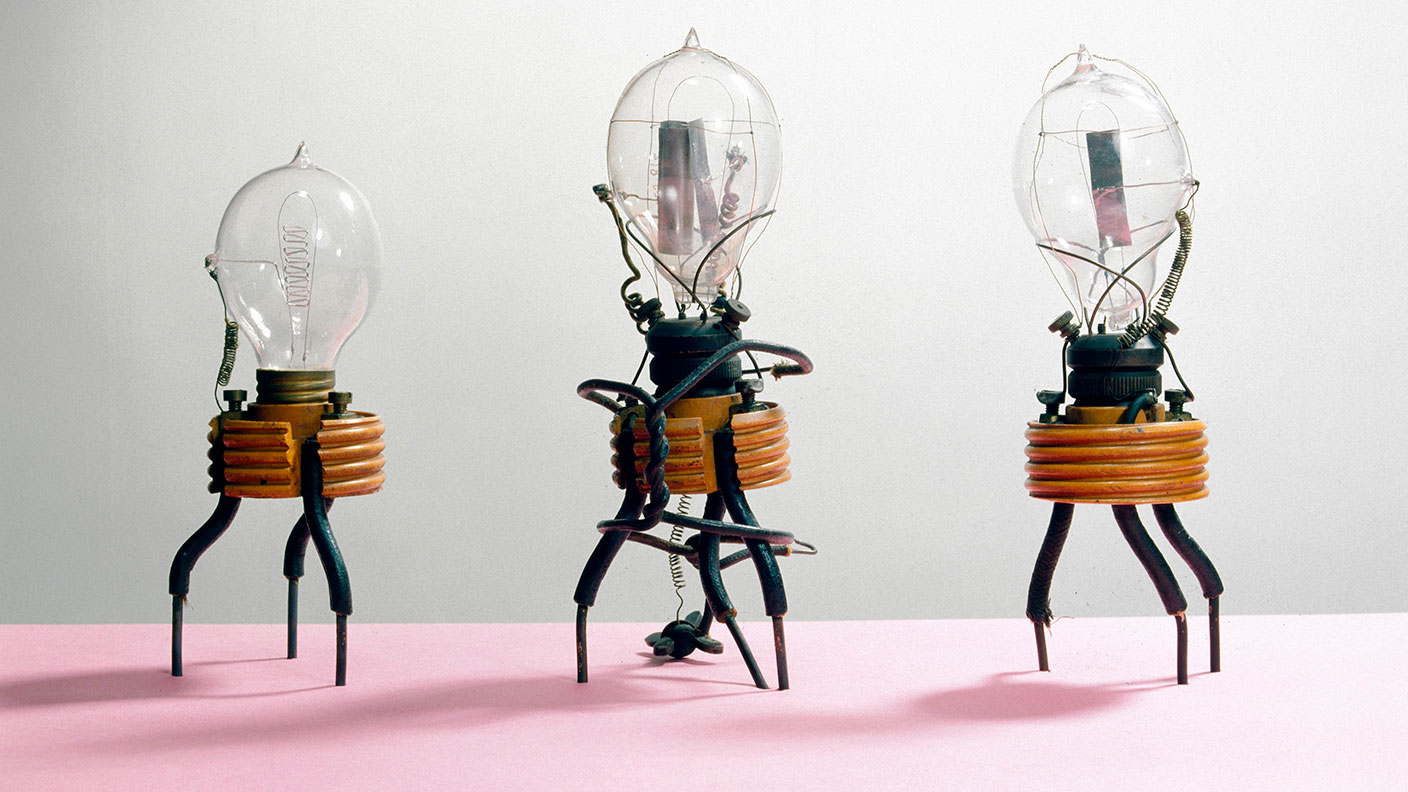
Perhaps the only contact many of us have with the sort of valves you get in electronics these days is if we have an ageing cathode-ray tube TV, or if we know a particularly boring audiophile who is prone to drone on at length about how his organically grown amp produces a much richer, more vibrant sound than your puny CDs or that new fangled streaming "music" that all the kids are listening to these days.
But valves (which our Americanly-challenged friends call vacuum tubes) were the backbone of the electronics industry for 50 years or so, until they were superseded by solid-state transistors.
And it's all thanks to the efforts of John Ambrose Fleming, the first professor of electrical engineering at London's University College, who also worked for both Marconi and Edison. He invented the oscillation valve, which he patented today in 1904. It was, without doubt, one of the most important developments in the history of electronics.
MoneyWeek
Subscribe to MoneyWeek today and get your first six magazine issues absolutely FREE

Sign up to Money Morning
Don't miss the latest investment and personal finances news, market analysis, plus money-saving tips with our free twice-daily newsletter
Don't miss the latest investment and personal finances news, market analysis, plus money-saving tips with our free twice-daily newsletter
Fleming's valve was the first practical application of the “Edison effect” – the phenomenon of “thermionic emission” whereby electrons flow from a heated element to a cool one – which Edison observed while creating his electrical light bulbs. Indeed, in many ways, Fleming's “thermionic” valve is little more than a modified light bulb.
By heating an electrode inside a glass bulb containing a vacuum, it is possible to “rectify” an electrical current and radio waves, and amplify them. And the later addition of a grid through which the electrons had to pass meant the current could be regulated.
The valve's invention led to the introduction of radio around the world, the discovery of radar, and eventually to the supercomputers and artificial intelligence of today.
Get the latest financial news, insights and expert analysis from our award-winning MoneyWeek team, to help you understand what really matters when it comes to your finances.
Ben studied modern languages at London University's Queen Mary College. After dabbling unhappily in local government finance for a while, he went to work for The Scotsman newspaper in Edinburgh. The launch of the paper's website, scotsman.com, in the early years of the dotcom craze, saw Ben move online to manage the Business and Motors channels before becoming deputy editor with responsibility for all aspects of online production for The Scotsman, Scotland on Sunday and the Edinburgh Evening News websites, along with the papers' Edinburgh Festivals website.
Ben joined MoneyWeek as website editor in 2008, just as the Great Financial Crisis was brewing. He has written extensively for the website and magazine, with a particular emphasis on alternative finance and fintech, including blockchain and bitcoin.
As an early adopter of bitcoin, Ben bought when the price was under $200, but went on to spend it all on foolish fripperies.
-
 Why UK investors are backing British stocks in 2026
Why UK investors are backing British stocks in 2026The UK stock market may be lacking fashionable technology shares but investors are keen to buy British next year
-
 UK inflation live: did inflation fall in November?
UK inflation live: did inflation fall in November?The ONS releases inflation data for November tomorrow (17 December). Has inflation continued its downward trend?
-
 31 August 1957: the Federation of Malaya declares independence from the UK
31 August 1957: the Federation of Malaya declares independence from the UKFeatures On this day in 1957, after ten years of preparation, the Federation of Malaya became an independent nation.
-
 13 April 1960: the first satellite navigation system is launched
13 April 1960: the first satellite navigation system is launchedFeatures On this day in 1960, Nasa sent the Transit 1B satellite into orbit to provide positioning for the US Navy’s fleet of Polaris ballistic missile submarines.
-
 9 April 1838: National Gallery opens in Trafalgar Square
9 April 1838: National Gallery opens in Trafalgar SquareFeatures On this day in 1838, William Wilkins’ new National Gallery building in Trafalgar Square opened to the public.
-
3 March 1962: British Antarctic Territory is created
Features On this day in 1962, Britain formed the British Antarctic Territory administered from the Falkland Islands.
-
10 March 2000: the dotcom bubble peaks
Features Tech mania fanned by the dawning of the internet age inflated the dotcom bubble to maximum extent, on this day in 2000.
-
9 March 1776: Adam Smith publishes 'The Wealth of Nations'
Features On this day in 1776, Adam Smith, the “father of modern economics”, published his hugely influential book The Wealth of Nations.
-
 8 March 1817: the New York Stock Exchange is formed
8 March 1817: the New York Stock Exchange is formedFeatures On this day in 1817, a group of brokers moved out of a New York coffee house to form what would become the biggest stock exchange in the world.
-
7 March 1969: Queen Elizabeth II officially opens the Victoria Line
Features On this day in 1969, Queen Elizabeth II took only her second trip on the tube to officially open the underground’s newest line – the Victoria Line.

